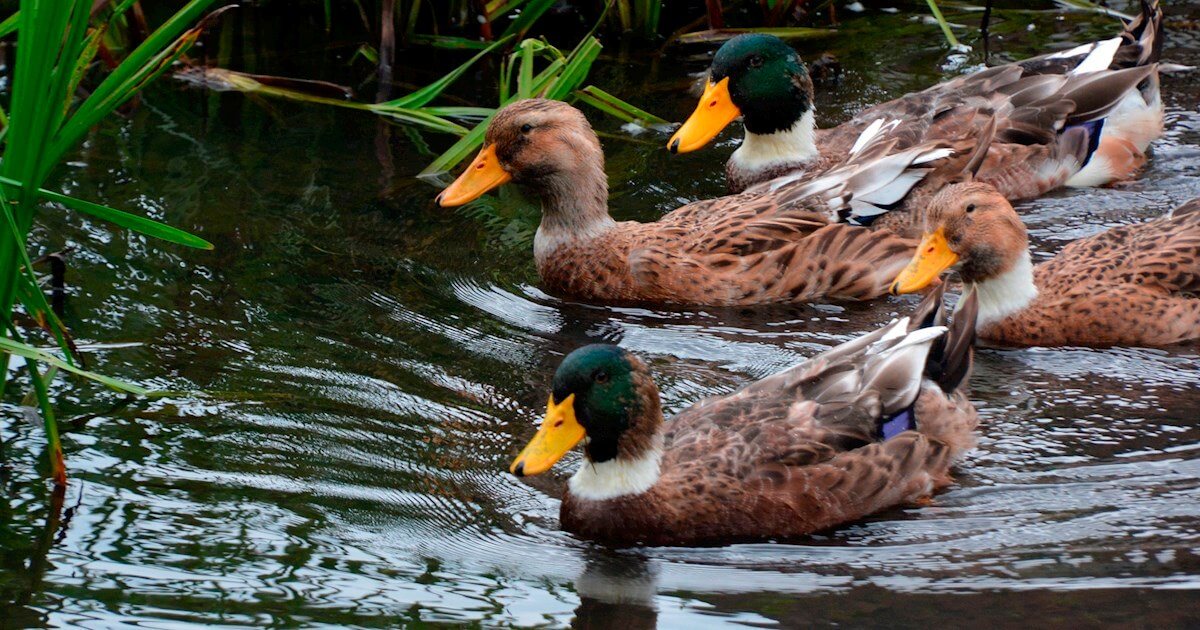Blekinge Duck

Scientific Name
Anas platyrhynchos domesticus
Alternative Names
Blekingeanka, Coast Duck
Measurements
| Feature | Male | Female |
|---|---|---|
| Length | 55–65 cm (22–26 in) | 50–60 cm (20–24 in) |
| Weight | 2.5–3.5 kg (5.5–7.7 lb) | 2–2.5 kg (4.4–5.5 lb) |
| Wingspan | 80–90 cm (31–35 in) | 80–90 cm (31–35 in) |
Status
Critically endangered. Rediscovered in 1994 after being thought extinct, the Blekinge duck now has a population of around 150–200 individuals. Conservation programs in Sweden, led by the Swedish Poultry Organisation, are maintaining purebred flocks through structured breeding and genebank systems. Population trends remain unstable, with fluctuations in recent years.
Average Life Span
8–10 years
Identification
The Blekinge duck looks similar to a pale, large mallard with a distinct white neck ring that varies in size. Drakes have yellowish-green bills, while females have yellow to brownish-yellow bills, both featuring a black tip. Their legs are orange to yellow-orange, and most individuals have wild-type brown and white coloring, though pure white variants occur. They are hardy birds well adapted to northern climates.
Breed History
The Blekinge duck is the oldest known duck breed from Sweden. It was rediscovered in 1994 on Ungskär Island in the Blekinge archipelago, where a small flock of seven birds was found after being thought extinct. These ducks had been raised for generations by a fishing family who kept them in stables during winter and released them in summer to forage freely.
Genetic studies suggest that this breed is a direct descendant of semi-domesticated mallards that were kept in Sweden during the Middle Ages. The rediscovered flock showed no evidence of crossbreeding with modern domestic ducks or wild mallards, making it an invaluable remnant of Sweden’s traditional landrace ducks.
Purpose
Historically bred for meat and as a hardy, self-sufficient duck in small coastal farms. Today, it is mainly preserved for conservation and heritage purposes.
Breed Eggs
Blekinge ducks lay about 60–100 eggs per year. The eggs weigh roughly 70 grams (2.5 oz) and are off-white to light green in color. Around one-third to half of the females will go broody, incubating their eggs for 26–28 days. The shells are thick and durable, offering good hatchability under natural brooding conditions.
Temperament & Behavior
These ducks are calm, hardy, and adaptable. They are good foragers, capable of thriving on natural foods like insects, plants, and fish scraps. They tolerate cold weather extremely well and require minimal human care. Though not particularly vocal, they communicate with soft quacks and can be kept in semi-free-range systems. Their independent nature makes them ideal for traditional farming or conservation settings.
Genetic Profile
A pure Swedish landrace duck with no known hybridization. Genetic evidence suggests direct descent from medieval semi-domestic mallards. The Blekinge duck’s conservation efforts prioritize maintaining genetic diversity through controlled breeding and pedigree tracking, with no use of artificial insemination.
